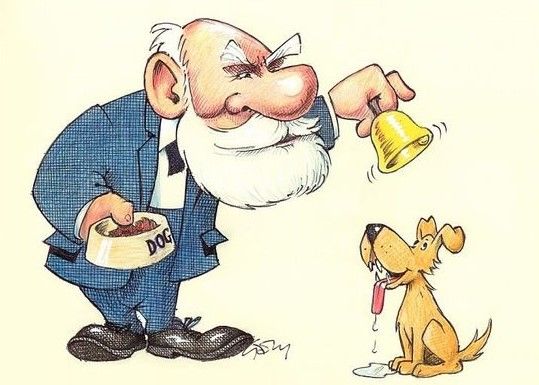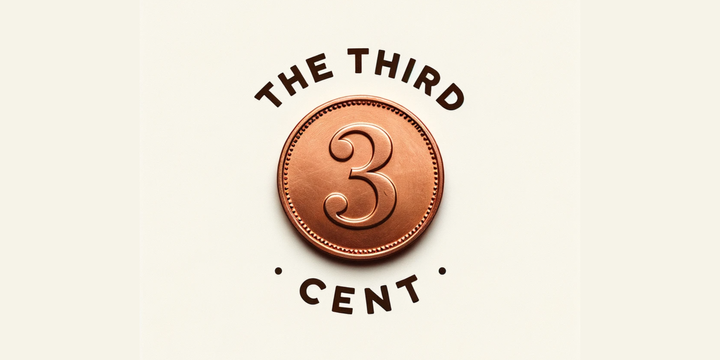Unveiling the Counter-Conditioning Tactics of Our Canine Friends

Introduction:
I write to you today with intriguing and pressing news that harkens back to our discussions in consumer behavior class, specifically the concept of classical conditioning.
You may recall our discussion about Pavlov's dogs. Pavlov demonstrated that when a dog heard a bell ringing before being fed, it would start associating the sound of the bell with food. After multiple iterations of this "Bell-Food-Eat" sequence, the dog would begin to salivate at merely hearing the bell. Even more interestingly, subsequent research indicated that sounds similar to bells, such as jingling keys, could elicit the same response.
However, the twist in the tale arrives now. We previously thought that this conditioning was a one-way street, humans teaching animals. Yet, recent revelations suggest that dogs might have been clandestinely training us in return. For more information, refer to the following link: Dogs' Eyes Evolve to Appeal to Humans - BBC News

New findings suggest that the well-known 'puppy dog eyes' are not as innocent as they seem. This seemingly heart-tugging expression by our furry friends might be a strategic maneuver to imitate an infant-like look, thereby triggering our innate nurturing response. My thesis posits that, more often than not, these actions manipulate us into either petting or feeding them.
In essence, our conditioning relationship with dogs is reciprocal. While we condition dogs, they've been subtly training us in return. Consider the evolving pattern: starting with "Puppy dog eyes - cute actions - receive food", gradually simplifying to just "Puppy dog eyes - receive food".
Indeed, the conditioning tables have turned in an unexpected way! Reflect on that next time your pet gives you that innocent, pleading look.
Taking things one step further:
While we are somewhat comfortable with the ideas of classical and operant conditioning, let’s ask ourselves a question that our textbooks do not discuss- can there be too much conditioning. I think the answer here is an obvious yes!! Too much of anything (however good it may be) is generally bad. When you condition too much, it’s possible that we oversaturate our consumers or even worse, lead them to exhibit undesirable behaviors. To put it in other words, over conditioning (if that’s a word I can use) would eventually lead to a state when consumers no longer display the desired response.
Let’s discuss this with a few examples.
Overusing Sales :
Businesses often use ‘Sales’ (as in Melas, and other promotional activities) as a reward to reinforce buying behavior. However, when a store has constant sales, consumers can become conditioned to only buy when products are discounted. I’m sure you have experienced this from time to time. When stores hyper indulge in organizing promotions, consumers may end up devaluing their products and eventually experience a fall in profits. Furthermore, if a sale is perceived as never-ending, it can lose its urgency, resulting in consumers postponing their purchases until the ‘next sale’. This was a case of Operant Conditioning. Now, let's draw inspiration from Bhakti here. Free samples are essentially a type of reward to encourage buying behavior- right? However, if customers become too ‘conditioned’ to receiving freebies, what do you think would happen? It may well happen that such consumers may visit stores primarily for the samples and not for actual purchases. Well, is that something that you would want as a marketing practitioner?

Overused Advertising:
Now, let’s look at a classical conditioning example. Repeated exposure to the same advertisement can initially create a strong association with a product. But when consumers see the same ad too frequently, it may lead to advertising wear-out. That’s actually a thing, and we have all faced it at some point in time or the other. If this were to happen, the ad in question may lose its effectiveness, or worse, annoy the consumer and create a negative association with the product.
Many brands routinely use ‘Jingles’ to create positive associations with the brand. Remember the Nescafe jingle (“Pap Parap Pa Ra Ra Ra..Pap Parap Pa Ra Ra Ra”) ? Or the Mc Donald’s “I’m lovin it”? While these were definitely catchy and memorable, imagine them getting overused. they can become annoying earworms. A jingle that was initially catchy might make consumers actively avoid the brand because they can't get the tune out of their head. And that’s now what you want, right? Remember, it is critical that we play a fine balancing act when it comes to conditioning.
Closing remarks:
In conclusion, our exploration of the fascinating and often surprising world of conditioning reveals its pervasive influence in shaping consumer behavior. We've examined the reciprocal nature of conditioning in human-animal relationships, the potential dangers of over-conditioning, and the crucial need for balance in marketing strategies. As intriguing as these insights may be, they are but a glimpse into the intricate dynamics of consumer psychology.
Next time, we'll venture deeper into this captivating subject, exploring how marketers use consumer learning both from the perspective of marketers, and from the vantage point of consumers. We'll discuss compelling real-world examples and discover some crazy strategies that people use. So, come prepared with your experiences, observations, and queries. Remember, in the realm of consumer behavior, nothing is as simple as it seems. Stay curious and see you in the next class!



